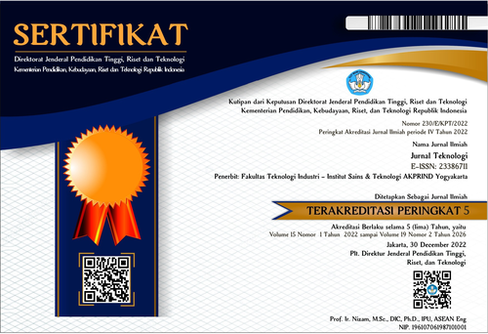DETEKSI DATA PENCILAN MENGGUNAKAN K_MEANS CLUSTERING
Keywords:
clustering, data pencilan, k_meansAbstract
Deteksi data pencilan sangat penting dan mempunyai banyak aplikasi diantaranya adalah identifikasi adanya pengacauan dan sumbatan dalam jaringan komputer, aktivitas kriminal dalam e-commerce, deteksi pemalsuan kartu kredit dan aktivitas-aktivitas yang mencurigakan. Dalam tulisan ini dibicarakan deteksi data pencilan menggunakan metode clustering k_means, dengan jumlah cluster dianggap parameter dan secara incremental ditambah sampai didapat cluster kecil yang kemudian dianggap sebagai data pencilan. Akhirnya diberikan ilustrasi bagaimana metode tersebut diterapkan pada beberapa kelompok data.
Downloads
References
Han, J. and M. Chamber , 2006. Data Mining: Concepts and Techniques, Morgan Kaufmann, 2nd ed.
Hawkins, D., 1980, Identifications of Outliers, Chapman and Hall, London
Hodge, V. and J. Austin, 2004. A Survey of Outlier Detection Methodologies, Artificial Intelligence Review, 22: 85–126.
Johnson,R.A,Wichren,D,2004.Applied Multivariate Analysis. Prentice Hall
Knorr, E., R. Ng, and V. Tucakov, 2000, Distance-based Outliers: Algorithms and Applications, VLDB Journal, 8(3-4): 237-253
Loureiro,A., L. Torgo and C. Soares, 2004. Outlier Detection using Clustering Methods: a DataCleaning Application, in Proceedings of KDNet Symposium on Knowledge-based Systems for the Public Sector. Bonn, Germany.
Niu, K., C. Huang, S. Zhang, and J. Chen, 2007. ODCC: Outlier Detection using Distance Distribution Clustering, T. Washio et al. (Eds.) : PAKDD 2007 Workshops, Lecture Notes in Artificial Intelligence (LNAI) 4819, pp. 332-343, Springer-Verlag.
Zhang, J. and H. Wang, 2007. Detecting outlying subspaces for high-dimensional data: the new Task, Algorithms, and Performance, Knowledge and Information Systems, 10(3): 333-355.
Downloads
Published
How to Cite
Issue
Section
License
Jurnal Teknologi provides immediate open access to its content in order of making research freely available to the public to support a global exchange of knowledge. All articles published in this journal are free for everyone to read and download, under licence CC BY SA.
Benefits of open access for the author, include:
- Free access for all users worldwide.
- Authors retain copyright to their work.
- Increased visibility and readership.
- No spatial constraints.




















